For raspberries do not need special and complex care, as it is too susceptible to the effects of cold and temperature changes. Before you grow a vitamin culture, you must carefully study the varieties that grow well in these climatic conditions and the quality of the soils of the region.
Raspberry varieties for the Urals and Siberia should have a high ability to survive in the frosty years, have time to quickly give a harvest of high-quality berries, and also be resistant to diseases and pests.
Table of contents
Features of the cultivation of remontant raspberries in the Urals
In the Urals, the usual raspberry varieties freeze out under the effect of frost, which is what causes this crop to be unprofitable. Therefore, we must make a choice in favor of the winter-hardy and remontant options.
Remontrance is the ability for continuous fruiting, such varieties immediately after the return of the main crop again throw out inflorescences, bloom and bear fruit.
The shoots of the repair raspberry are resistant to wilting, do not need to be tied to the trellis and supports. It is enough to mow shoots in the fall, and then remove them from the site to prevent the development of diseases and wintering pests on the stems.
But if after cutting the stumps are left, and the usual raspberry plantings are located nearby, such pruning will not guarantee against damage by pests and fungi. Therefore, when caring for the remontant raspberry, it is not necessary to spend money on chemical treatments, but only to devote time to proper, simple agrotechnology. In the summer, these varieties will give an environmentally friendly crop.
Raspberry varieties for the Urals should have high yields, be adapted to unfavorable growing conditions. After all, the yield and taste of fruits depend on favorable wintering conditions and weather during the growing season. Abundant rains during this period reduce yields, which lead to inhibition of shoot growth, as well as severe frosts in November in the absence of snow cover, which leads to freezing of branches.
The repair raspberry has different ripening terms, therefore, when purchasing seedlings, they take into account the climatic zone. Adapted varieties offer nurseries located in your area. It is optimal to stop the choice on several options in order to verify in practice their quality.
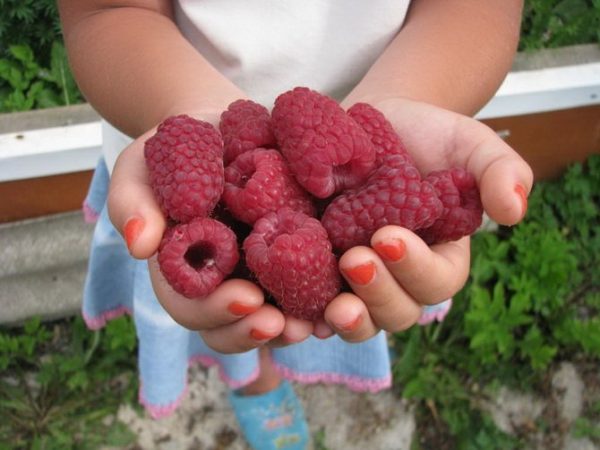
The best varieties of the Ural raspberry
Early raspberry varieties with high winter hardiness are suitable for the Urals: High and Zorenka Altai. Possess a little less resistance to frost: Ruby seedling, Kirzhach,News Kuzmina, Kolokolchik, Kichinovskaya. The best repair raspberry variety for the Urals is Zorenka Altai.
Judging by taste, then the most juicy and tasty berries at Kolokolchik, Zorenka Altai, Amateur Sverdlovskaya and Kuzmina News.
Early ripening variants are most affected by the raspberry beetle: Kuzmina News and Amateur Sverdlovsk, and the least of all is Zorenka Altai.
From middle-ripening varieties there are more affected berries in High, Kolokolchik and Kichinovskaya. Tourmaline - the most resistant to defeat.
You may be interested in the following raspberry varieties:
Early maturation
Amateur Sverdlovsk. The berries are a rich ruby color, juicy, with a pronounced raspberry smell. Gardeners appreciated not only the fast and friendly ripening of berries, but also the resistance of shoots to the harsh climate. Bushes are medium in size, wide, spreading. On the shoots there is a wax coating, the spikes are soft and almost do not interfere with the harvest. Fungal diseases affect only a few bushes, and with timely preventive treatment, you can forget about them.
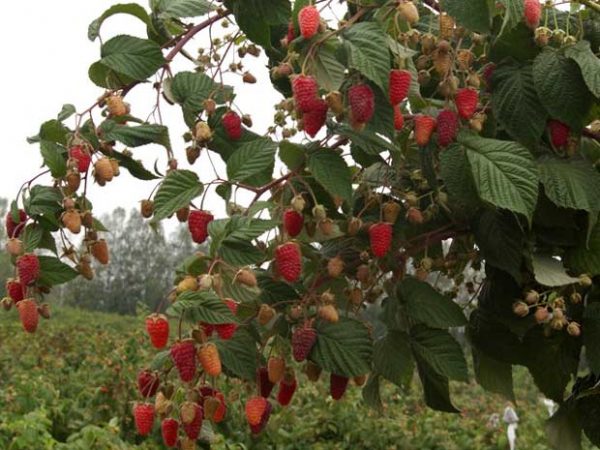
Lel. The berries are red, dense, large, with a pleasant smell. They stay on the bush for a long time and do not crumble, they are also amenable to transportation. The bush is tall, half-sprawling. Raspberries are almost not exposed to diseases and pests.
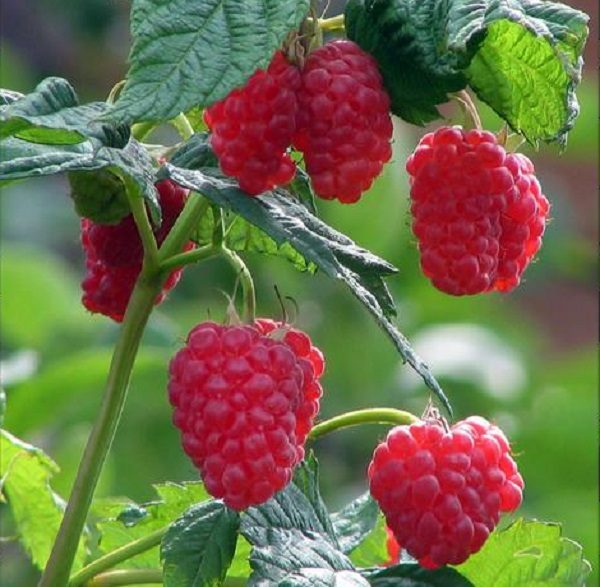
Zorya Altai. It showed high winter hardiness, friendly return of tasty fruits, large-fruited and endurance to temperature extremes. The berries are scarlet, rounded, pleasant taste, amenable to transportation. Shrubs are always pleased with abundant crops, ripening berries and a simultaneous simultaneous.
Very tasty fresh, as well as compote and preserves. Shrubs grow tall and sprawling, shoots covered with numerous thorns.
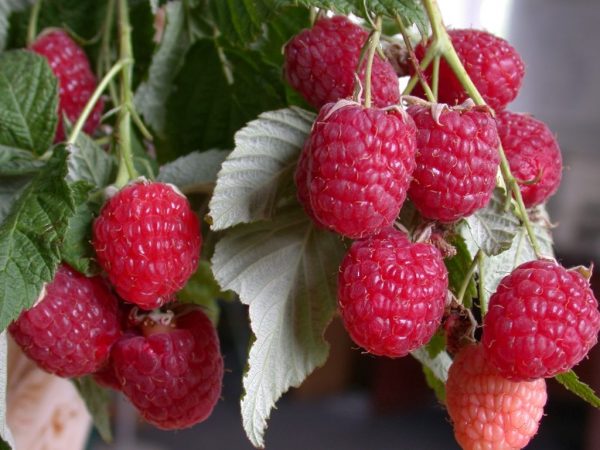
Medium ripening
Velvet. Not affected by low temperatures. Productivity is high and stable. Berries are red, juicy, sweet, amenable to transportation. May hang for a long time on the bushes and not be affected by gray mold. Bushes grow medium, semi-sprawling.The shoots are densely covered with soft spikes, so they appear soft and velvety.
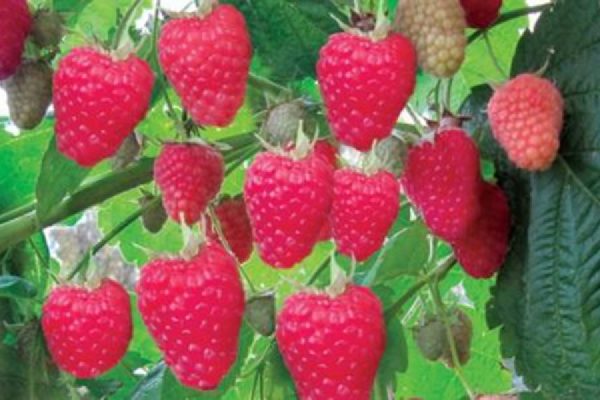
High. Resistant to low temperatures, adapted to temperature extremes. Raspberry each year gives stable yields of delicious berries, rich “raspberry” color, palatable, spherical, dense, well transported.
Consume fresh, canned and frozen. If the bloom has fallen under the spring frosts, the variety is able to restore the crop by flowering on additional inflorescences. The bush is tall, slightly sprawling. Straight shoots end with slightly drooping tops. Spikes on shoots average amountbut they are tough and long. Resistant to diseases.
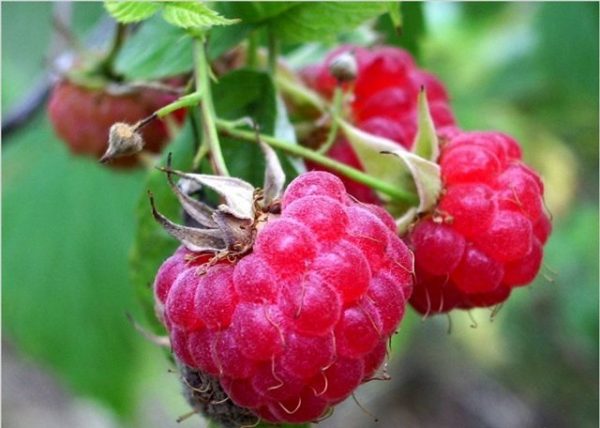
Tourmaline - refers to the large-fruited varieties. If you work for the winter to bend the shoots, then it will be a good winter. Very large pink-red berries, tasty, dense, amenable to transportation. After the harvest ripens, the berries stay on the bush for a long time and do not fall.
They ripen in late terms, which prolongs the raspberry season. Shoots do not grow tall, plastic, without thorns.Well managed to grow on the trellis, because under the weight of the fruit can break bushes. Sometimes the variety freezes, but quickly grows at the expense of fruit twigs in the upper part of the shoot. Resistant to pests, slightly affected by purple spot.
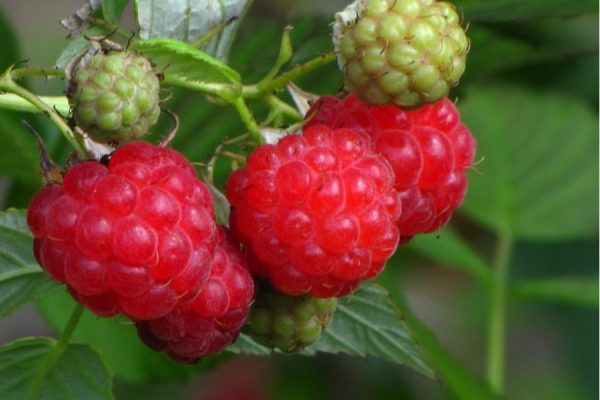
The best raspberry varieties for Siberia
Breeders use all skills and knowledge to promote raspberry varieties further to the North, and to meet the needs of gardeners in a tasty and juicy summer berries. Varieties must have high taste, and not freeze and withstand periods of drought.
Most Popular
- Early sweet - ripens quickly, has a high resistance to Siberian frosts;
- Sibirsky light - fruits are delicious, they are pleased with high taste qualities;
- Barnaulskaya - earned the respect of the gardeners of Siberia and the Urals for the high rates of frost resistance;
- The reward will please with juicy and fragrant fruits, the variety withstands low temperatures and does not freeze;
- Gift of Siberia - withstands severe frosts without freezing, resistant to pests and diseases.
Early maturation
Vera. Gardeners claim that the best raspberry variety for Siberia is simply not to be found.It has average yields - about 5 kg from a bush, but the bush itself is low, semi-sprawling. Harvesting takes place in 2-3 collection, the first collection of the most widespread. Drought does not affect the quality of the harvest, but when watering the taste of the berries improves, they become more succulent with pleasant sourness.
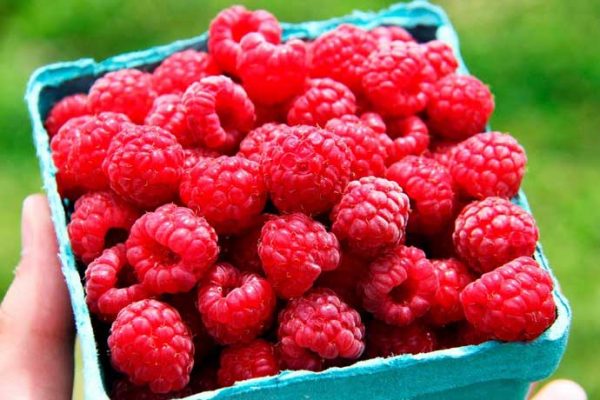
Early sweet. Variety of national selection. The berries are red, small, short-conic. The fruits will be pleased with a pleasant taste and aroma, but can not be transported. Bushes high, give little overgrown. Annual shoots spiny, covered with a waxy bloom. Thorns are short, thin, purple. Does not freeze.

Average
Brilliant. Berries with raspberry color, not very large, fragrant, with a sweet-sour taste, ripen at the same time, harvest 5-6 times. The fruits hang on the bushes for a long time and do not crumble. Can be consumed fresh, but also suitable for processing and freezing. The shoots are flexible, the tops lean down, so it is best to grow on the trellis.Biennial shoots become brown in color, slightly pubescent. Bushes are winter-hardy, resistant to diseases and pests.
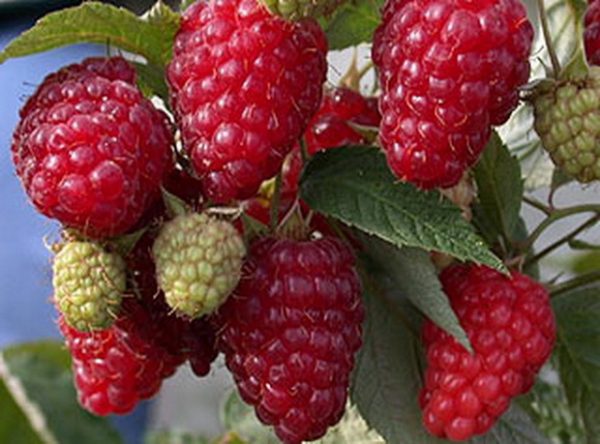
For health. Berries of medium and large size with carmine color. The flesh has a dessert taste, dense, juicy. Shrubs sredneroslye, sprawling, shoots formed a little. Annual shoots are painted in purple, covered with thorns. It needs watering, when dry weather yields are sharply reduced. Raspberries are resistant to spider mites and purple spots.
Gift of Siberia. Very interesting berries - a delicate cream shade, pleasant to the taste, long kept on the bush, dense and fragrant. Harvesting is possible not at once, fruiting is stretched. Bushes grow tall and powerful. The shoots that grow in the first year of the growing season are green, the next year they become brownish. Rhodat for cultivation in severe conditions, does not freeze out.
It is extremely important to choose the right raspberry variety for the site. Before buying, it is necessary to decide what characteristics it should have, the taste of the fruit and the possible purpose of the crop.The most profitable and resistant to frost are remontant varieties that are grown in a one-year crop. These varieties will delight crops, simplicity and tasty berries.
